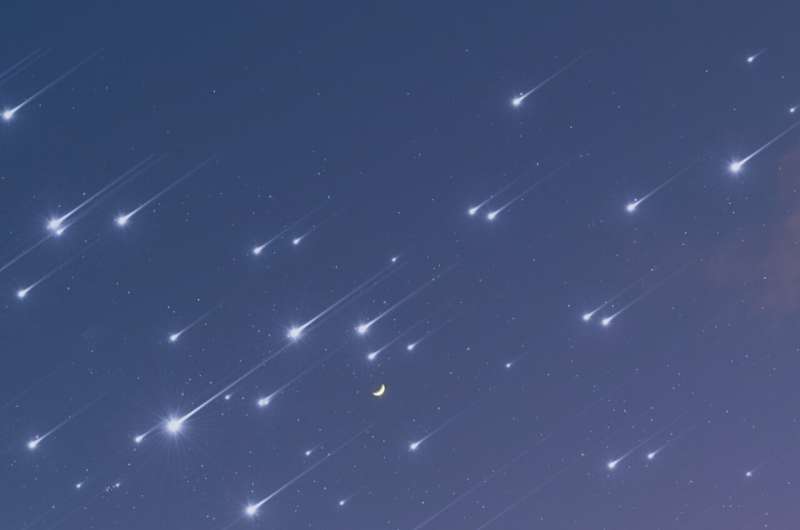This article has been reviewed according to Science X's editorial process and policies. Editors have highlighted the following attributes while ensuring the content's credibility:
fact-checked
reputable news agency
proofread
For the New Year, look up at the Florida sky

Omnipresent fireworks displays won't be the only lights in the sky over the next few nights: There will be natural spectacles, too.
Seeing them may take some planning, some luck and perhaps a pair of binoculars. But stargazers who get themselves in the right place at the right time will have a chance to commune with a celestial display older than even the very old tradition of fireworks.
The New Year will mark the end of a span, several nights long, in which the seven other planets in the solar system are all visible in the night sky. Then, on Jan. 3, the Quadrantids meteor shower will peak.
Neither event is especially rare. The alignment of planets comes every year or two; the last was in June. And the Quadrantids shower is an annual occurrence. Still, this is a chance to see, within a few days, two happenings that can be remarkably pretty, said Charlie Dittmar, an astronomer at Tampa's Museum of Science and Industry.
The planetary alignment was at its best on Wednesday, Dittmar said, but there's still a small window to catch it in the next few days. Mercury is the trickiest planet in this case, as it'll appear low in the west just after sunset, if the conditions are right.
"There's usually a very fine little slice of the night, if at all, that Mercury is available," he said. "You can't have any clouds or haze or any problem with the clarity of the sky."
It helps to be somewhere with a low horizon, away from light pollution—like a remote beach. Mercury is technically visible to the naked eye, but Dittmar said viewers will probably need a pair of binoculars to pick the dull orange planet out of the haze.
Two other planets, Uranus and Neptune, are only visible with binoculars or a telescope. But Dittmar said sky-watchers should have an easier time picking out the rest: Venus, second only to the moon in its brightness, also low in the western sky (find it, then look nearby for Mercury); orange Saturn, a bit higher and more southerly; Jupiter, bright white and due south; and to the east, Mars, shining and reddish.
During the peak of the Quadrantids, considered by NASA to be one of the best annual showers, viewers can see as many as 100 meteors an hour, Dittmar said. Unlike most showers, he said, they feature blue meteors, a result of their mineral content.
The best way to see the shower, Dittmar said, is to get as far away from city lights as possible. Then, you need "just a blanket or lounge chair, and to spend the time for your eyes to get adjusted."
The near fullness of the moon will make it harder to see all but the brightest meteors, he said, but watchers can compensate by posting up behind a building that shields them from the moonlight.
Dittmar finds something lovely in how the presence of the planets and the Quadrantids coincide with the New Year, he said.
"One of the things that's comforting to me when I look up at the sky, I tend to think about all the generations and generations and generations of people who have looked at the sky before me," he said. "The fact of the New Year keeps me connected with the future, but the sky keeps me connected to the past.
"No matter how crazy stuff gets here down on earth, the sky's going to be the sky."
2023 Tampa Bay Times. Distributed by Tribune Content Agency, LLC.




















